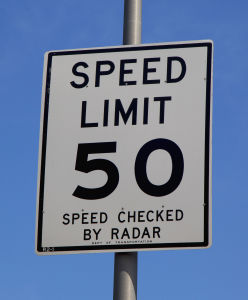How Often Should I Check my Tire Pressure?
 Everyone knows how to determine if their car is running low on gas, but how can you tell if your tires are running low on air? Tire pressure is often overlooked, but proper inflation is key to extending the life of your vehicle and your tires. In fact, not only will properly inflated tires extend the life of your tire tread, but it will also save you money on gas and keep your family safer on the road. Below, we discuss the in’s and out’s of proper tire pressure.
Everyone knows how to determine if their car is running low on gas, but how can you tell if your tires are running low on air? Tire pressure is often overlooked, but proper inflation is key to extending the life of your vehicle and your tires. In fact, not only will properly inflated tires extend the life of your tire tread, but it will also save you money on gas and keep your family safer on the road. Below, we discuss the in’s and out’s of proper tire pressure.
Why should I care about my tire pressure?
Some people believe as long as their tires pass the eye test, they are properly inflated (i.e. My tires don’t look flat, so they must be good to drive on). While it’s always a good idea to visually inspect your tires before you get behind the wheel, you could be compromising your safety and hard-earned money if your tires are over or underinflated.
- Overinflated tires are problematic because it decreases the amount of tread that can touch the ground. This means you’ll have less stability and traction. Over-inflation can also make a tire more susceptible to blowout.
- Underinflated tires will wear out faster than their properly inflated counterparts. Because your wheels are compensating for the added stress of low tire pressure, they will begin to overheat. Hot tires lose their tread much quicker than tires that are operating at the optimal temperature.
- Properly inflated tires will save you money at the gas pump. According to the U.S. Department of Energy, you can improve your gas mileage by over 3% by keeping your tires at the proper pressure level. That’s roughly 12 cents a gallon. Assuming the average consumer fills up their 15-gallon tank once a week, properly inflated tires will save you $93.60 a year.
When should I check my tire pressure?
Regular tire pressure checks are the best way to ensure your tires are running at the optimal pressure level. Give your tires a visual check every time you approach your vehicle, and get in the habit of preforming another check when you’re at the pump. You can find a handheld pressure gauge at your local hardware store, and keeping the gauge in your vehicle makes checking your tires a breeze. If you check your pressure while you’re getting gas, you can usually always find a pressure pump close by if you’re running low. If you don’t want to check your tires that often, a good rule of thumb to follow is to check your tire pressure once a month.
-
How do I know if a Mechanic is Ripping Me Off?
 Feb 19, 2014
Feb 19, 2014Unless you have a friend or family member who is well versed in automobiles, finding a trusty mechanic can be an intimidating process. We would love to believe that people in the service industry are inherently trustworthy, but unfortunately that isn’t always the case. Although you may never know for sure until you’ve had service […]
-
What is Hydrophobic Glass?
 Jul 15, 2015
Jul 15, 2015Hydrophobic glass, as the name implies for anyone versed in word origins, means that the glass is treated in such a way that it repels water. We’ve installed hydrophobic glass before, and although it’s more expensive than normal windshield glass, some drivers prefer the tempered glass. Below, we explain a little more about hydrophobic glass and […]
-
The Worst States For Speeders
 Dec 17, 2014
Dec 17, 2014Let’s be honest, car ownership can be expensive. Regular scheduled maintenance isn’t usually too bad, but you also have to factors in other expenses like car insurance and driving citations. Even the best drivers have seen the flashing blue and red cherries in their rearview mirrors before, so today we’re looking at the worst and best […]




